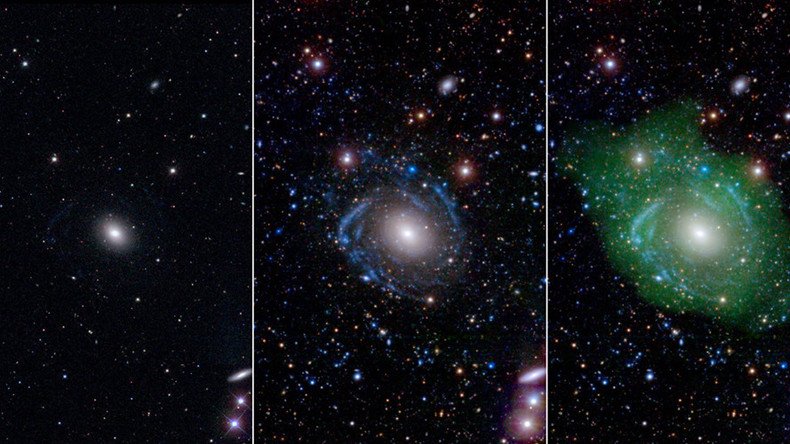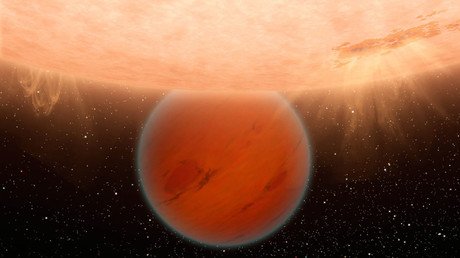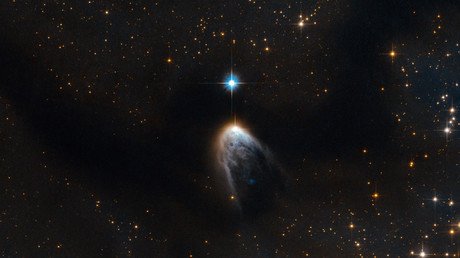Distant galaxy fools astronomers for decades, turns out to be giant ‘Franken-spiral’

For almost a half-century a remote, seemingly unremarkable galaxy has kept a secret literally inside itself: astronomers armed with NASA’s powerful telescopes have found it consists of non-matching parts and is older on the outside than on the inside.
The ugly duckling of a galaxy has been included in more than 40 scientific papers, but none of them paid attention to the gem hiding on the outskirts of a “quiet little suburban neighborhood of the universe,” said Mark Seibert, of California’s Observatories of the Carnegie Institution for Science, co-author of a study on UGC 1382.
The mediocre-looking UGC 1382 is now thought to be around 718,000 light-years in diameter. Moreover, data suggests it was formed from parts of other galaxies – hence the nickname “Frankenstein.”
Among other distinctive features of this enigmatic celestial body, Seibert also noted that “it is so delicate that a slight nudge from a neighbor would cause it to disintegrate.” Plus, it is seven times wider than the Milky Way and is also one of the three largest isolated disk galaxies ever discovered. It consists of low-density gas that doesn’t let stars form in the area and guarantees its secluded location.
The discovery was made possible after scientists decided to have a look at the galaxy using NASA's Galaxy Evolution Explorer (GALEX) telescope with the ultraviolet mode on while working on different research.
“We saw spiral arms extending far outside this galaxy, which no one had noticed before, and which elliptical galaxies should not have. That put us on an expedition to find out what this galaxy is and how it formed,” said Lea Hagen, a graduate student at Pennsylvania State University who led the study.
The biggest surprise was the way the galaxy has grown. Most often the inner parts are older that the outer parts, but this is not the case with UGC 1382, where the ageing process goes backwards.
“The center of UGC 1382 is actually younger than the spiral disk surrounding it. It's old on the outside and young on the inside. This is like finding a tree whose inner growth rings are younger than the outer rings,” Seibert said.
Scientists believe that there may be more similar galaxies that require thorough research.
“By understanding this galaxy, we can get clues to how galaxies form on a larger scale, and uncover more galactic neighborhood surprises,” Hagen said.














